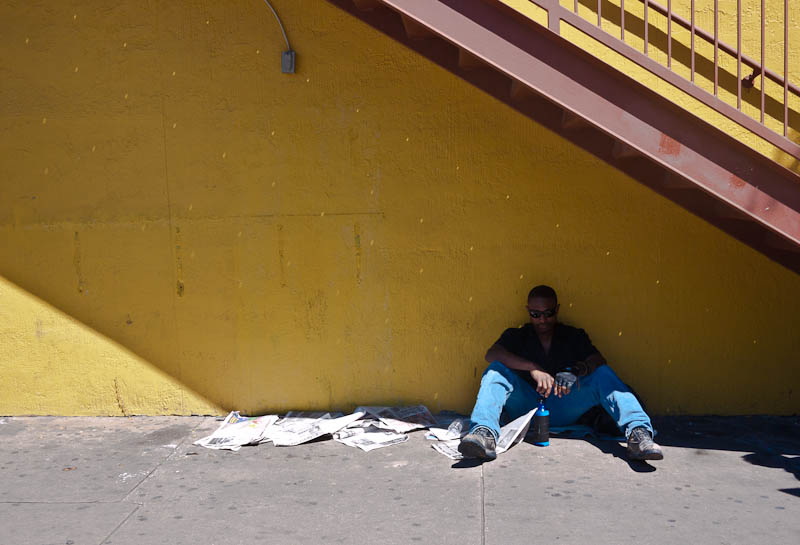Street Ethics
It is no simple coincidence that the common verbs of photography invoke hunting, violence and theft: shoot, capture, take, and even snap. The people I photographed yesterday at the Old Pecan Street Festival did not give their permission and I did not ask for it; I literally took their images. The law does not allow me to sell those pictures for “commercial use” without their permission; if they open a magazine one morning to find their face selling a better acne treatment without having signed a release form then they have grounds to sue. But the law does allow me to use their image in my art – I can exhibit these images and even sell them without the subject’s permission if the purpose is artistic and not commercial. And that’s where the difference between law and ethics comes in.
Every street photographer must draw their own ethical lines governing what they can take and what they can show. Long standing interpretations of the first amendment applied to artistic expression and journalism give photographers broad rights under the law when shooting in public places and when not invading a person’s reasonable expectation to privacy: If you are in a public place you are fair game but someone using a 600mm lens to read the W2 form you just opened from 50 feet behind you would be overstepping your reasonable assumption of privacy given that no one was close enough to read your salary with the naked eye. Sounds easy enough to interpret but ethics is more than simply obeying the law.
I took two pictures yesterday that, by my ethic, I cannot show on this site; I saw another that I could not take. Perhaps the best photograph from the afternoon was of a man holding a can of Heineken and leaning against a wall on which was painted a cartoon bar scene. If he hadn’t asked what I was doing his photograph would be the one at the head of this blog entry. That he didn’t want his picture appearing on Internet was the first thing he said; we chatted amicably for about ten minutes on a range of topics but I started by promising that I would honor his wishes. I so wish I had got his name so that I could at least send him a copy but stupidly I did not, all I know is that he lives in Quincy, Illinois. Anyway, I gave my word.
Another image is of an eight or nine year old girl sitting by herself on a railing – my ethic does not allow me to post that on the web and I don’t need to be asked. I am a parent; I would not have wanted strangers to have been posting photographs of my daughters when they were nine (I would not be much happier now that they are 15 come to that). The courts and my ethic might actually agree on this – a photograph of a minor who has no concept of what “a reasonable expectation of privacy” is should be entitled to greater protection under the law than an adult. I would probably feel differently if there were an adult in the image with the girl, or if the girl were laughing in a group of other children, but there is a vulnerability about her isolation in the picture that mandates discretion.
The photograph I did not even take was of a quadriplegic in an electric wheel chair, asking for money. If I were a journalist and writing a piece on poverty in Austin I might feel justified in taking such a picture but as a casual Sunday photographer doing so would have felt like exploitation.
So why was it OK for me to take this picture of a man sitting out of the hot afternoon sun in the shade of a stair case? I was drawn to the shadows, the form, the colors, the scatter of the newspaper but the composition would be far weaker without the person sitting on the ground. There’s a Rorschach quality to the image – “what do you see?” – that makes its meaning ambiguous, edgy for some audiences. Not only did I take this man’s image (with all that “image” means in our culture) but I took his image out of its context. The frame does not show the band on stage 50 feet to the left, it does not show how people are using this corner to meet up with family and friends, it doesn’t show the dozens milling around and about to enter the frame; such knowledge stripped from the image changes the balance of its interpretation.
The man sitting on the Sunday newspaper is a healthy adult in a public place, he is not in an embarrassing situation, and he did not ask me not to show the picture – that’s inside my ethical line, at least that’s what I thought yesterday. Your lines might be drawn in different places and I would not judge you for that, all I can judge is myself, but at the end of this posting I find myself less certain of the validity of my ethical boundaries than when I started to write. It seems that I have more thinking to do.




